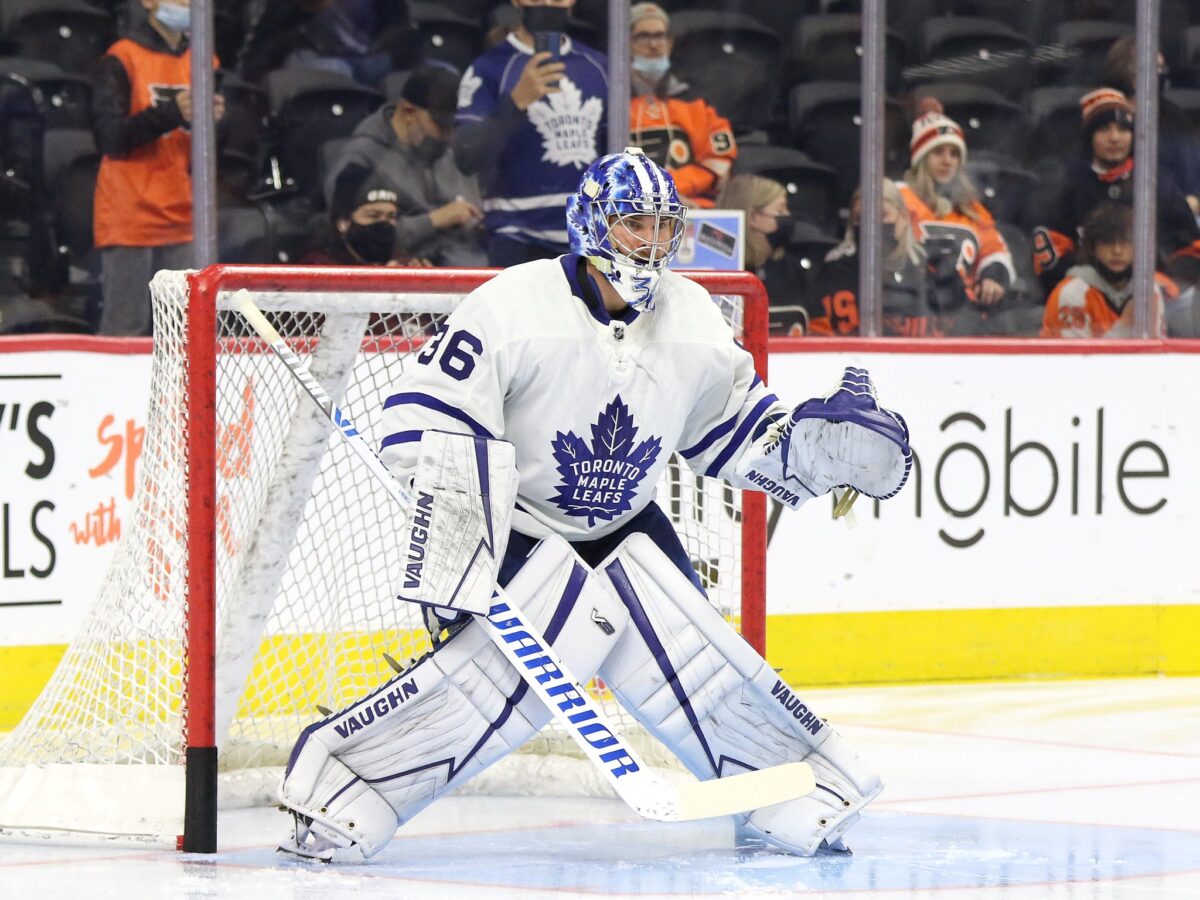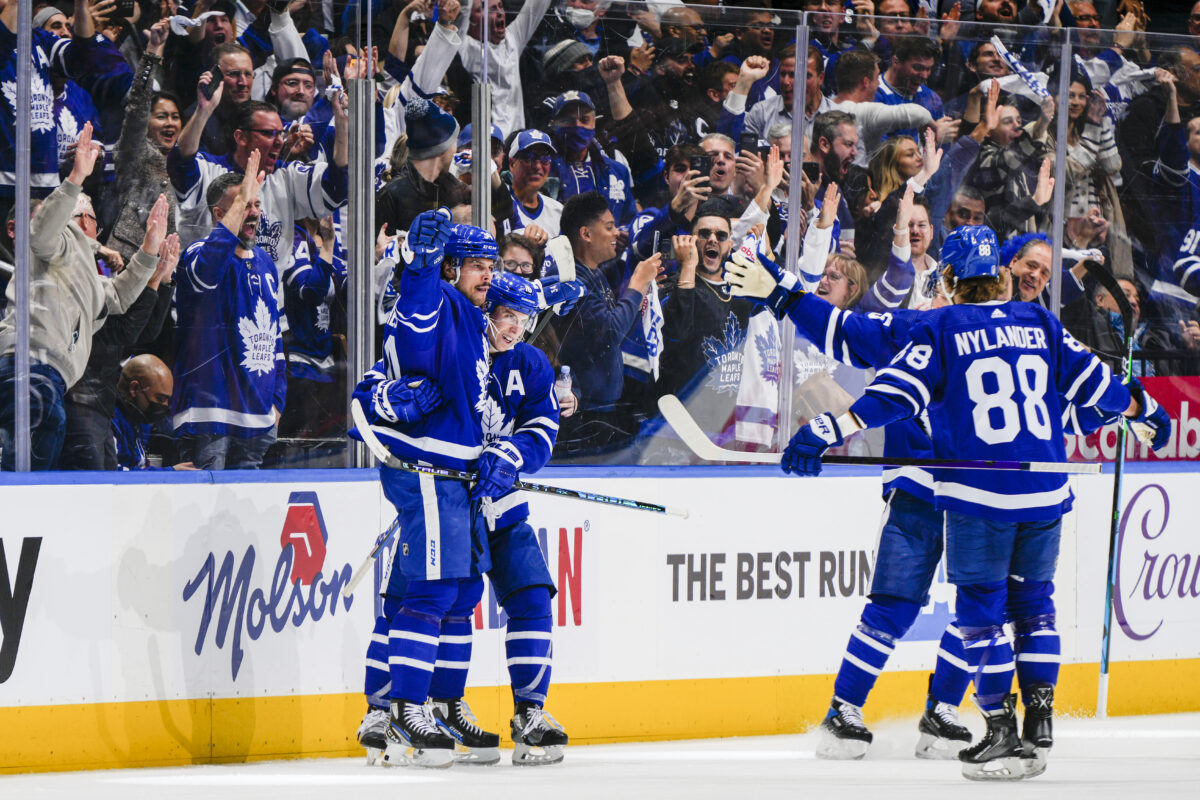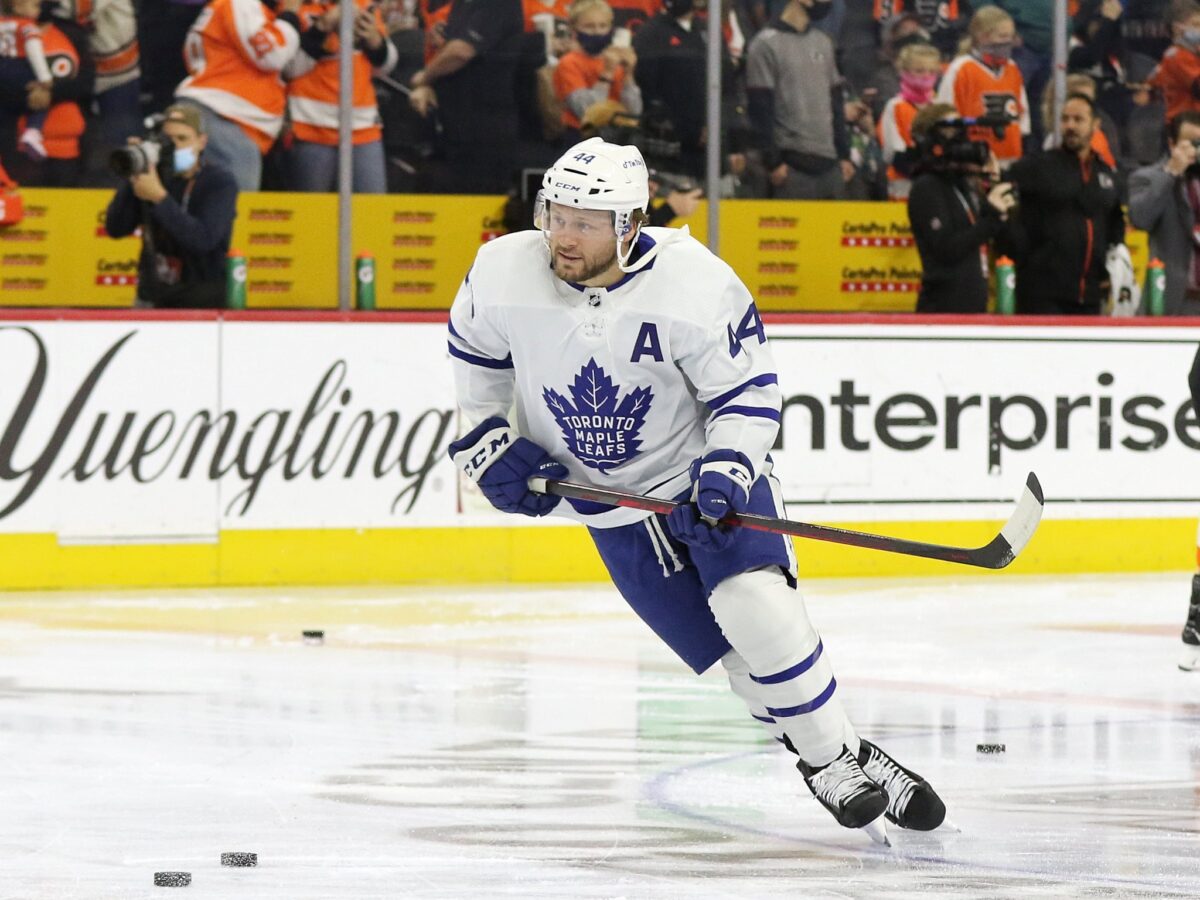Prior to the start of the 2022 Stanley Cup playoff round between the Toronto Maple Leafs and the Tampa Bay Lightning, we wrote about five key things that needed to happen for the Maple Leafs to be successful in getting past the Lightning in the first round.
Our purpose today is to review those five keys to see where the Maple Leafs were successful and where they weren’t. We will also talk about one important key that we missed.
Related: Maple Leafs Newcomer Colin Blackwell Might be the Real Deal
Counting down from five:
Key #5: The Maple Leafs needed competent goaltending.
We stated that Jack Campbell had to be good enough. He didn’t have to be the “All-Star” Campbell he was earlier in the season, he just needed to stop the shots he should stop.
While Campbell’s numbers were not the greatest in the series, he finished with a 0.897% save percentage and a 3.15 goals-against average. That compares to Andrei Vasilevskiy’s 0.907% save percentage and 3.13 goals-against average.

What accounted for that difference was Game 4. In that game, Campbell allowed five goals on sixteen shots and was pulled halfway into the game.
Looking specifically at what Campbell did when the series was on the line, we see that once the Maple Leafs went up 3-2 in Game 6, from that point on Campbell allowed two goals on 14 shots in the third period and overtime in Game 6, and then allowed two goals on 25 shots in Game 7. That works out to a 0.897% save percentage and a 2.50 goals-against average in that period.
Related: Canucks: 3 Most Notable Indigenous Players
Our conclusion is that Campbell played well enough to give the Maple Leafs a chance to win the series. Was he outstanding? Far from it. Was he competent enough, or, good enough? Maybe yes? Could he have been better? Definitely yes.
Key #4: The rest of the Maple Leafs skaters needed to play the opposition to a draw.
In Key #4, we were looking to see how the players outside of the main core played. They didn’t have to outscore the opposition, just play them evenly and not get outscored by them.
Adding the points that the Maple Leafs got in the series that were not scored by Auston Matthews, Mitch Marner, William Nylander, John Tavares, and Morgan Rielly, and then comparing them to the points scored by the players outside of the Lightning’s top five players, who we consider to be Steven Stamkos, Nikita Kucherov, Braydon Point, Ondrej Palat, and Victor Hedman, we get 28 points for the Maple Leafs and 29 points for the Lightning.

Going by those numbers, we conclude that the Maple Leafs’ players outside of the core five played the opposition to a draw.
Key #3: The Maple Leafs needed one or two players outside of their top five to have an excellent playoff.
Did the Maple Leafs have any player, or players, who stood out, outside of the core five? We believe David Kampf definitely stood out, especially early in the series. He scored two goals in the first three games and finished the series at plus three.
Related: Little Known Facts About the Stanley Cup
That scoring came from a player whose usage was almost 100 percent defensive. How tough was his usage? In the 127 face-offs Kampf took in the series, only seven were in the opposition’s zone. In contrast, 83 face-offs were in his own zone. That’s a staggering 92.2 percent of his zone starts in the defensive zone. Kampf won 53.7 percent of those face-offs.
Before the playoffs, there were questions whether Jake Muzzin would be able to play and about whether he should play. To be frank, Muzzin did not have a good regular season. When he wasn’t injured, he struggled badly. There were even suggestions that the 2021-22 version of Jake Muzzin wasn’t one of the Maple Leafs’ top six on defense.

Not only did Muzzin play all seven games in the playoffs, but he played well. He seemed like the Muzzin of old. He finished the series with two goals and an assist and had a plus-four rating. He also added 25 hits and 16 blocked shots in the seven games. Despite not being 100 percent healthy, his ice time (22:11 per game) wasn’t that much less than Morgan Rielly’s (22:35 per game) and T.J. Brodie’s (22:47 per game).
Brodie also had a good playoff. While he only had two points in the series, he was the Maple Leafs’ best player in plus/minus at plus-five. He also contributed 16 blocked shots and 13 hits. He led the defense in overall ice time (22.47 per game, five-on-five ice time (18:11), and short-handed ice time (3:53).
Related: 3 Maple Leafs Salary-Cap Sacrifices for the 2022-23 Season
We could also mention Ilya Mikheyev. He had two goals and two assists in the seven games.
Our conclusion is that the Maple Leafs indeed had players outside of the core five who had an excellent playoff.
Key #2: Matthews, Marner, Tavares, and Nylander needed to stay healthy.
This is an easy one to answer. While the Maple Leafs had the usual bumps and bruises, and some of their players outside the core were playing with injuries, the four players mentioned were all healthy.
Key #1: Their best players have to be their best players.
The Maple Leafs’ top scorers in this series were Matthews (with nine points), Marner (eight points), Nylander (seven points), Tavares (six points), and Rielly (six points). The team’s top players were indeed its top players.

The question is “Were they good enough?” To this question, we have to answer a qualified, no.
The Maple Leafs’ core did not come through when the series was on the line. John Tavares scored two goals in Game 6 to put the Maple Leafs up 3-2 late in the second period and had a goal called back in Game 7 that would have been huge. But, from the time the Maple Leafs took that 3-2 lead at the end of the second period of Game 6 to the final whistle to end Game 7, a total of just over 98 minutes of hockey, the core five players combined for only one goal.
Related: Dallas Stars Playoff Outlook: What Went Right
While we could conclude by looking at their point production, the core five played well overall, when the series was on the line they simply did not come through.
The key we failed to mention.
Key #6 The Maple Leafs could not lose the special teams battle.
The Maple Leafs were one of the best teams at five-on-five this season. They were also the best team on the power play with a 27.2 percent success rate and had the 13th best penalty kill at 82.4 percent. It would make sense if they, at the very least, played the Lightning even on special teams their five-on-five play would be able to carry the series.
As it was, in a series where the refereeing was, to put it mildly, puzzling, the special teams’ battle was won by the Lightning. Tampa scored seven power-play goals on 33 chances, while the Maple Leafs only scored four power-play goals on 28 chances.

(Amy Irvin / The Hockey Writers)
In a series that was ever so close, and where the last two games were decided by one goal, one more goal on the power play by the Maple Leafs, or one fewer goal given up by the penalty kill, might have made the difference.
Overall Conclusion
Of the six keys reviewed here to the Maple Leafs winning their first-round series with the Lightning, the Maple Leafs were successful in three of them, questionable in two, and failed one.
Once again, we are discussing a first-round exit in the playoffs by the Maple Leafs. Numerous questions need to be answered this offseason about how to finally get this team over this seemingly insurmountable hump.
[Note: I want to thank long-time Maple Leafs’ fan Stan Smith for collaborating with me on this post. Stan’s Facebook profile can be found here.]